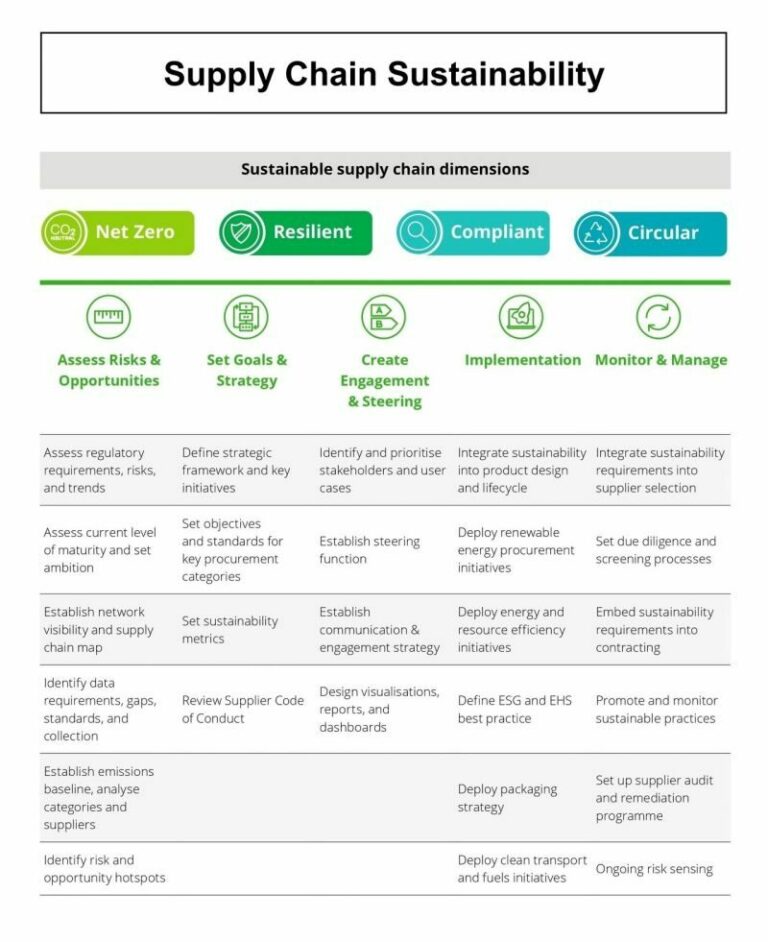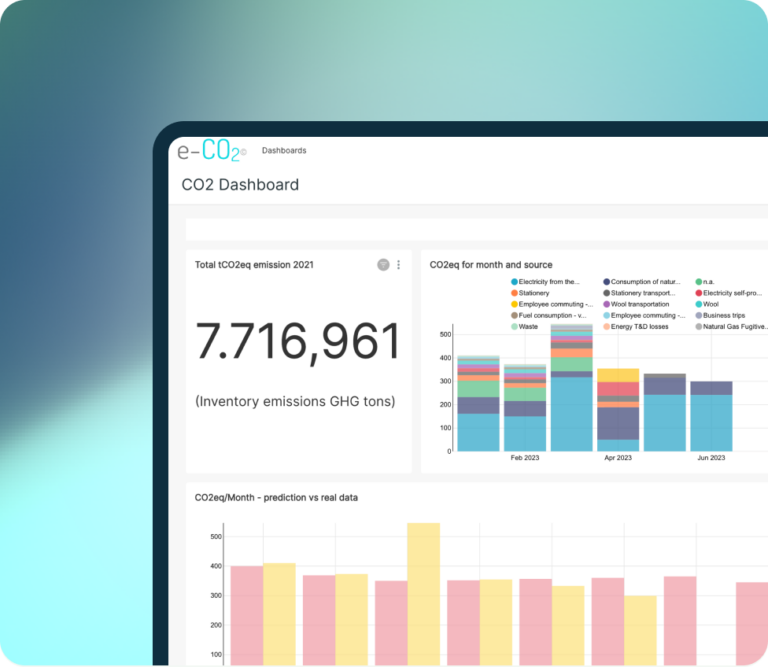Why a Sustainable Supply Chain Is Strategic for Companies

Condividi questo post
In 2025, building a sustainable supply chain is no longer optional—it is a strategic necessity to ensure operational resilience, regulatory compliance, and long-term value creation.
Yet, many companies still underestimate the impact of their supply chain on environmental, social, and financial performance.
To address this challenge, businesses must integrate four strategic dimensions across five operational steps. This article outlines how to turn sustainability from a vision into an actionable, measurable framework that drives competitive advantage.
The 4 Strategic Pillars of a Sustainable Supply Chain
First and foremost, companies need to focus on these four critical areas:
Net Zero
Systematically reduce Scope 3 emissions across the value chain, aligned with international climate goals.Resilience
Ensure adaptability to regulatory, climatic, and geopolitical disruptions while maintaining business continuity.Regulatory Compliance
Meet evolving ESG regulations—such as CSRD, CSDDD, SFDR, EU Taxonomy, and CBAM—through traceable and verifiable reporting systems.Circularity
Embrace circular economy models by optimizing resource usage, designing sustainable products, and engaging suppliers in regenerative practices.
The 5 Operational Steps to Build a Sustainable Supply Chain
Next, organizations must translate these strategic pillars into actionable processes. Here are the five key steps to consider:
Risk Evaluation
To begin with, ESG risk assessment starts by identifying:
Regulatory trends
Industry benchmark emissions
Supply chain visibility gaps
Data integrity and traceability issues
This process allows companies to quantify exposure, increase ESG maturity, and define targeted investment priorities.
Strategy and ESG Governance
Once insights are gathered, it’s time to develop a solid sustainability strategy by:
Defining ESG KPIs for procurement
Updating supplier codes of conduct
Embedding ESG clauses into contracts
Creating cross-functional sustainability task forces
Therefore, this step operationalizes sustainability, moving it beyond policy into daily decision-making.
Stakeholder Engagement
At the same time, engaging supply chain stakeholders is critical for:
Integrating ESG and EHS standards into operations
Enhancing internal and external transparency
Mitigating reputational and operational risks
In short, a sustainable supply chain is one that is co-created and collaboratively managed.
KPI Implementation
At this stage, sustainability becomes tangible through data. Implementing KPIs allows businesses to:
Monitor supplier performance
Track ESG outcomes across tiers
Detect early signs of risk or non-compliance
Consequently, KPIs serve as the foundation for continuous improvement and informed decision-making.
KPI Monitoring and Management
Finally, ensuring alignment over time requires:
ESG due diligence procedures
Ongoing supplier audits
Contract updates with ESG criteria
Real-time risk detection mechanisms
As a result, sustainability becomes a key lever for supply chain resilience and long-term competitive advantage.
How ecosostenibile.eu Supports Sustainable Supply Chain Management
ecosostenibile.eu®, as a certified benefit company, offers an integrated SaaS platform to:
Map and assess ESG supply chain risks
Automate KPI tracking and reporting
Monitor compliance and manage exceptions
Integrate seamlessly with ERP systems and ESG reporting tools
In conclusion, the platform supports companies step-by-step, streamlining operational efforts and increasing the effectiveness of their sustainability strategy.
Christian Sansoni




